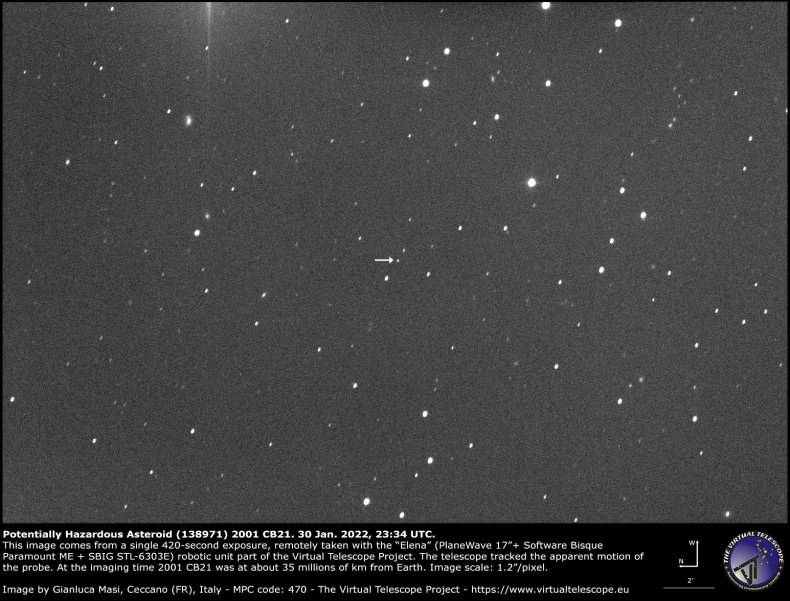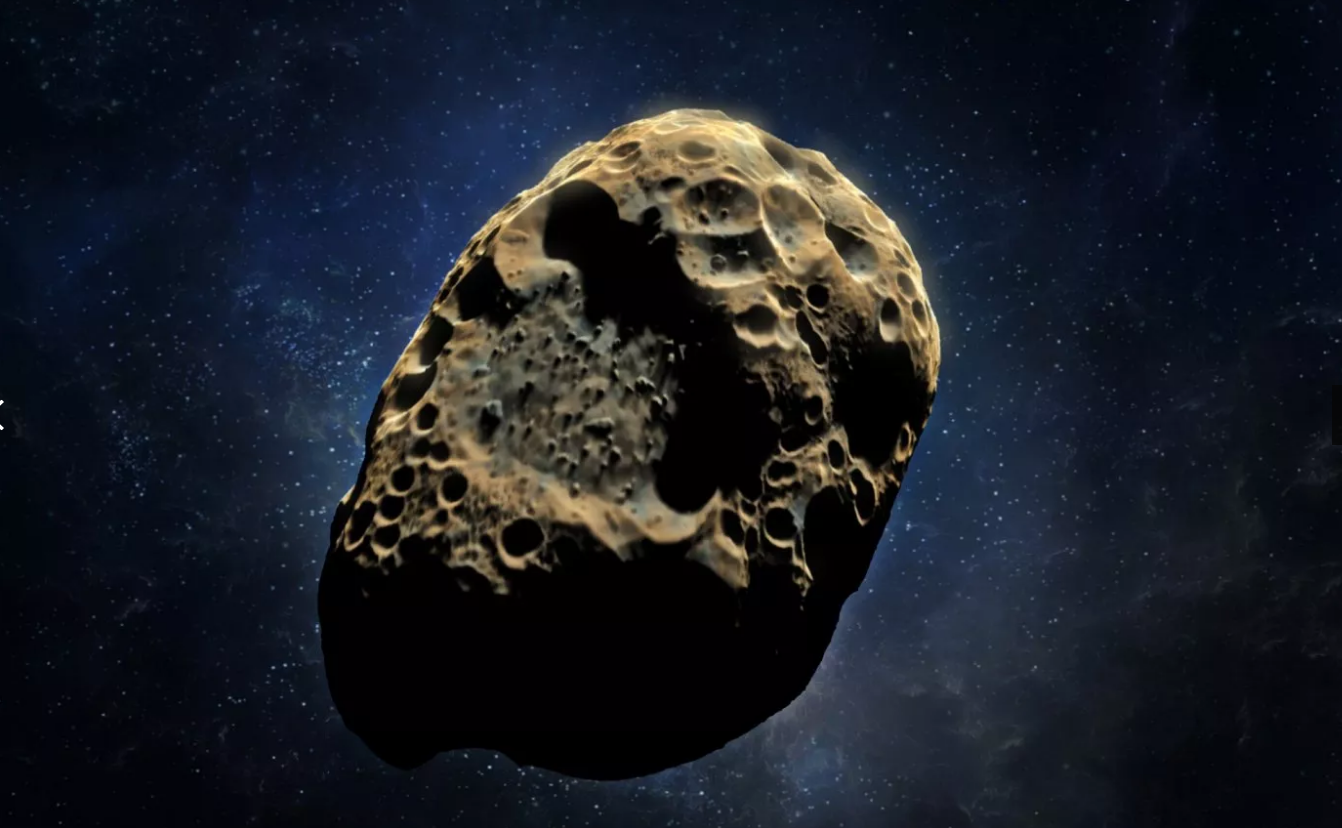NASA Image Asteroid that might be 4000 Feet Wide and Heading Towards Earth

NASA image depicts an asteroid that might be 4000 feet wide and heading towards Earth.
A massive asteroid is set to pass quite near to Earth next month, and an astronomer has detected it as it approaches.
The diameter of the asteroid, 138971 (2001 CB21), is predicted to be up to 1.3 kilometers (4,265 ft). In other words, it might be four times as broad as the Eiffel Tower is tall.
2001 CB21 is scheduled to fly by Earth on March 4 at around 3:00 a.m. ET, at a speed of almost 26,800 miles per hour.

But there’s no need to worry: although NASA’s Center for Near Earth Object Studies (CNEOS) classifies the asteroid as “possibly dangerous,” it’s not likely to strike us in the near future.
Although CNEOS refers to its next trip by Earth as a “near approach,” it will really be more than three million miles away at its closest point, which is more than ten times the distance between us and the moon.

Gianluca Masi, an astronomer with the Virtual Telescope Project in Italy, acquired a photograph of the 2001 CB21 using an Earth-based telescope on January 30 when it was more than 21.5 million miles away.
The asteroid is seen in the picture below as a little white dot marked by an arrow in the middle. The picture was captured with a single 420-second exposure using a PlaneWave 17″ robotic telescope device.
2001 CB21 orbits the sun once every 384 days, which is comparable to Earth’s own orbital period. According to SpaceReference.org, its massive size makes it larger than 97 percent of known asteroids.
The asteroid’s designation as “possibly dangerous” by CNEOS does not imply that it will ever strike us. Instead, this categorization is based on the asteroid’s ability to make “threatening near encounters” to Earth, as defined by CNEOS.
Essentially, if an asteroid is less than 500 feet in diameter and cannot approach us closer than 4.6 million miles, it is not classified as a potentially hazardous asteroid (PHA).
PHAs are not uncommon: last month, the asteroid 1994 PC1, which also falls into this category, sped by Earth at a distance of around 1.2 million miles. Again, it was not thought that the asteroid would hit with our world.
However, space rock collisions with Earth remain a real concern, and NASA is working on initiatives like the Double Asteroid Redirection Test to improve humanity’s capacity to cope with an approaching asteroid attack.
0 comments